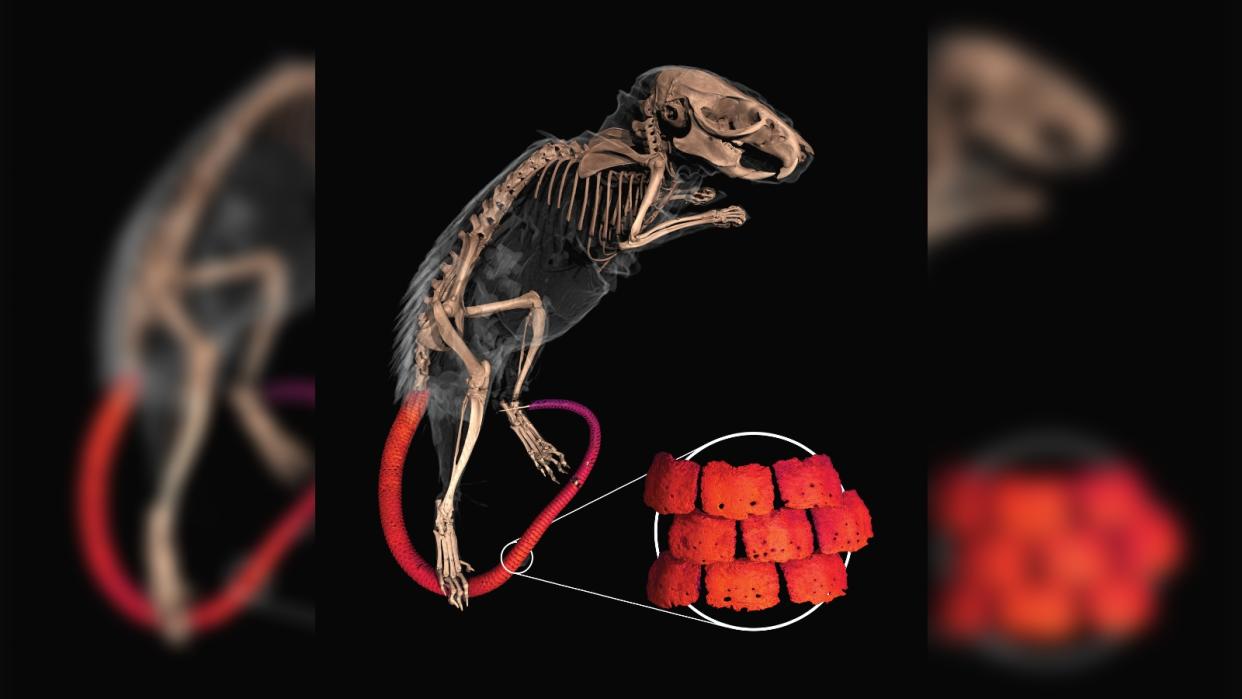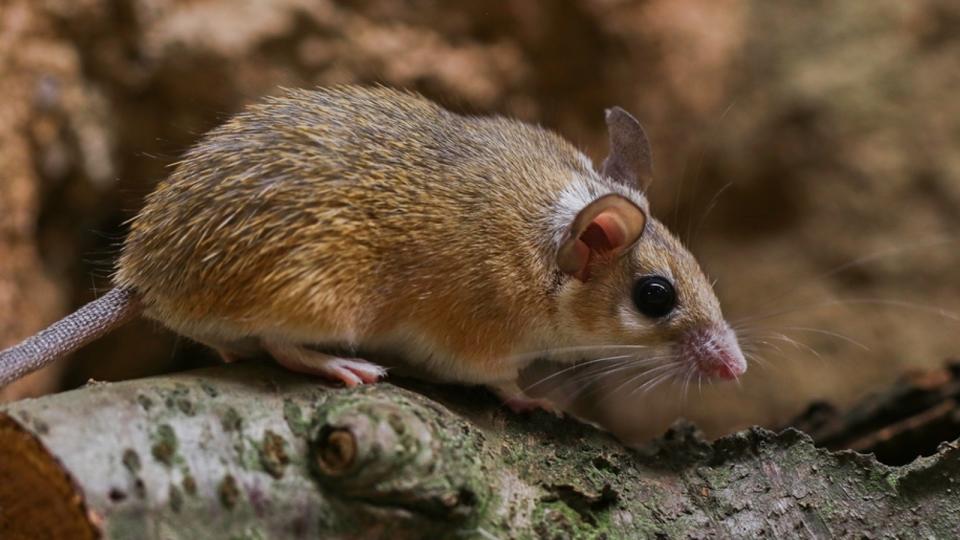Some mice tails are secretly reinforced with bony scales, just like dinosaurs


Researchers have serendipitously discovered that all species in a mouse genus have tails secretly reinforced with bony scales. Before now, only one mammal group — armadillos — were known to possess these scales.
Spiny mice in the genus Acomys, which contains 21 species, appear similar to common mice from the genus Mus but are more closely related to the rodent sub-family Gerbillinae, which includes gerbils and sand rats. Spiny mice have unusually stiff and bristly hairs, known as guard hairs, which shield them from abrasion and moisture.
Edward Stanley, a digital imaging specialist at the Florida Museum of Natural History, wanted to scan spiny mice species as part of the openVertebrae (oVert) project, an ongoing project that aims to study 20,000 vertebrae specimens from U.S. museums and universities. Stanley borrowed some specimens from colleague Malcolm Maden, a wildlife biologist at the University of Florida, and used a CT scanner to create detailed images of their internal structures.
The scans revealed the presence of bony scales — known as osteoderms — hidden beneath the outer layer of skin in the mice's tails.
"I had given Ed some of my spiny mice to scan as part of his project and, lo and behold, they had very rare bony plates in the skin of their tails," Maden said in a statement. "It was a classical serendipitous finding of two people in the same place working on different things."
The findings were published May 24 in the journal iScience.
Related: Kaleidoscopic image of a mouse's brain is 64 million times sharper than a typical MRI

Osteoderms are extremely rare among mammals. Armadillos (Dasypus) are the only other mammal genus known to possess the bony scales, which cover a majority of their bodies. But osteoderms are common in reptiles including lizards and crocodilians, as well as some frog species. Osteoderms were also common among dinosaurs and were especially important to Ankylosaurs, which jousted one another with their club-like tails.
However, the spiny mice likely use their bony tails as a defense mechanism against predators rather than for fighting.
The osteoderms in the spiny mice tails are similar in shape and structure to those found in the fossilized remains of extinct sloths, which also possessed bony scales. This shows that osteoderms have "been here before" in mammals, Maden said, and suggests that the protective plates have evolved more times across the mammalian evolutionary tree than previously thought.
RELATED STORIES
—New part of the body found hiding in the lungs
—Minibrains grown from human and mouse neurons learn to play Pong
Follow-up experiments showed that osteoderms develop in spiny mice around six weeks after birth. Researchers used a type of genetic analysis known as RNA sequencing to identify the underlying genes involved in their formation. Although researchers are unsure exactly why this happens.
The scientists found that the mice switched off genes responsible for producing keratin — a protein found beneath the skin in other mouse tails, as well as in human hair and nails — and switched on osteoderm genes instead.
The team now wants to study exactly how the mice do this in hopes of being able to artificially create an "armor-plated mouse" in the lab, Maden said.

